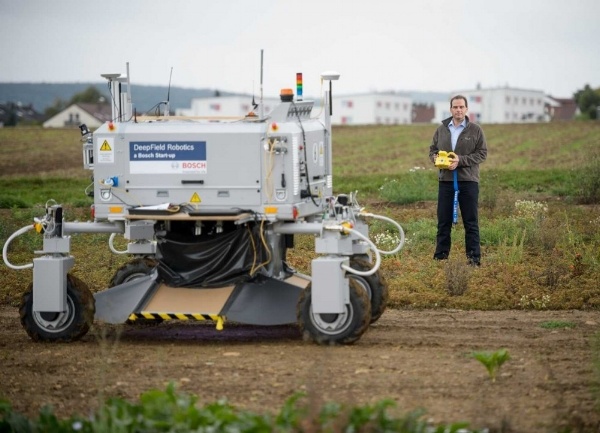The impact of technology in our lives has never been more evident. As the demand for fast and effective systems rise, technology has proven to be the solution.
Over the past decade, automation of different processes in industries has been incorporated across most fields. From Healthcare, Automotive, Manufacturing, and processing industries, to the food, beverage, and agriculture industry.
Robotic automation has proven to result in numerous benefits when incorporated in industries. Regardless of the different fields where it’s been applied, this technology has resulted in improved productivity, better working conditions, better quality products, and more profitability.
In the food and agriculture industry, the results of this automation have similarly remained outstanding. Therefore, more players in the industry have incorporated it into their productions.
With the many capabilities robotics offer, its most common applications in this industry include:
1. Picking and packaging
Working on repetitive tasks is the most common application of robotics. In food and beverage industries, robots are used for pick and place tasks and also packaging the products.
This is because robots are faster and more efficient compared to human workers. Also, the robots don’t get tired or bored from the nature of the job; hence, the quality is not affected.
Tasks such as bottle picking, bin picking, and loading trays are but a few of the tasks that can be handled by the robots.
In the beverage industry, robotics has been useful in case of packing, bagging, and bundling, among other tasks. This has helped the industries double their productivity.
Some companies have also incorporated palletizing robots for better convenience when transporting the products.
2. Harvesting and Picking
Although this application is relatively new, some farmers are utilizing industrial robots in their harvesting. Automating the process has proven to increase the number of crops harvested per minute. It also preserves the state of the crops from damage during the process.
With many industrial robots for sale available in the market, many farmers opt for collaborative robots for this task. Using robotic arms, harvesting of fruits such as apples, pears or pineapples, is done much faster.
Due to the numerous sensors installed in the robots, they can hold the fruits with the right force to prevent any damage to the fruit.
Besides the robots, combine harvesters have been automated for faster and easier harvesting of crops such as wheat and barley.
3. Planting, Weeding, and Irrigation
For over a century, human beings have continually developed and innovated different ways on how to improve their agricultural practices.
Robotic automation is one way that has revolutionized this field. Farmers are now using nursery automation to grow their seeds. By incorporating geo-mapping, the farmers can identify and plant the seeds in the best soil on the farm.
The planting is however enabled using a tractor with robotic seeding attachment.
Due to their accuracy and speed, the robots are also used for weeding, pruning, and spraying pesticides or herbicides on the crops. Their ability to conduct micro-spraying minimizes the use of herbicides and pesticides and protects soil and air pollution.
4. Milking and Herding
The use of collaborative robots in milking cows has become a common application for many farmers today. With many companies perfecting the robots to do this task, the robots can simultaneously milk multiple cows at once.
The technique therefore saves time and increases the milk production rate.
Robotic technology such as the use of drones has also been embraced and is popular herding technique that helps round up large herds of animals.
5. Secondary processes
In food production, robots are utilized in large bakeries to decorate cakes and other pastries that require complex shapes and sizes.
They are used in decorating pizzas and tending to the ovens. This application is enabled by the fact that robots can be programmed to suit different shapes and sizes.
Conclusion
The food and agriculture industry is a growing field that possesses a massive potential in incorporating robotics to improve its services.
While a lot still has to be done to improve robotic incorporation, it has so far been an essential productivity tool for this industry.



Be the first to comment on "5 Applications of Robotics in the Food and Agriculture Industry"